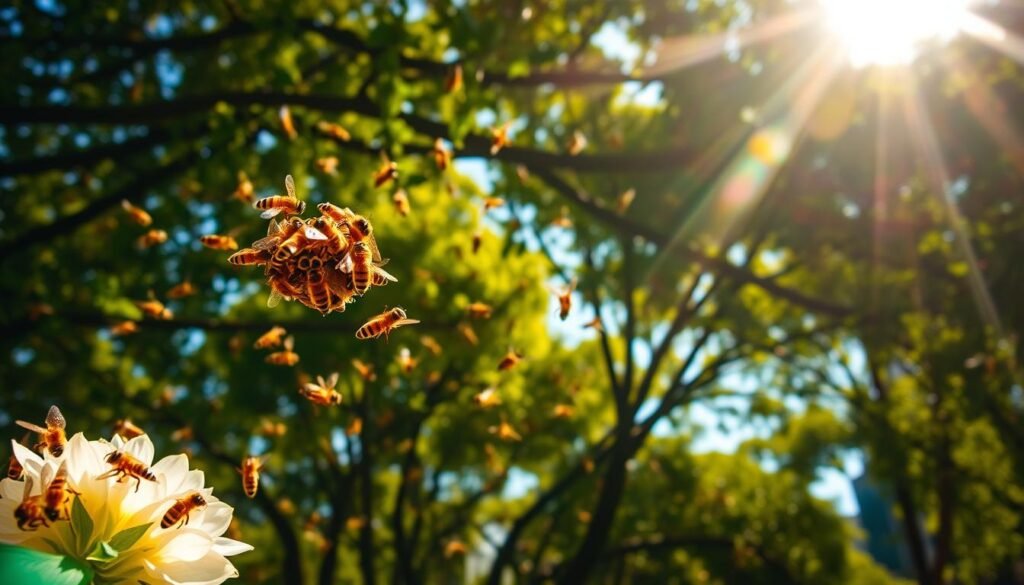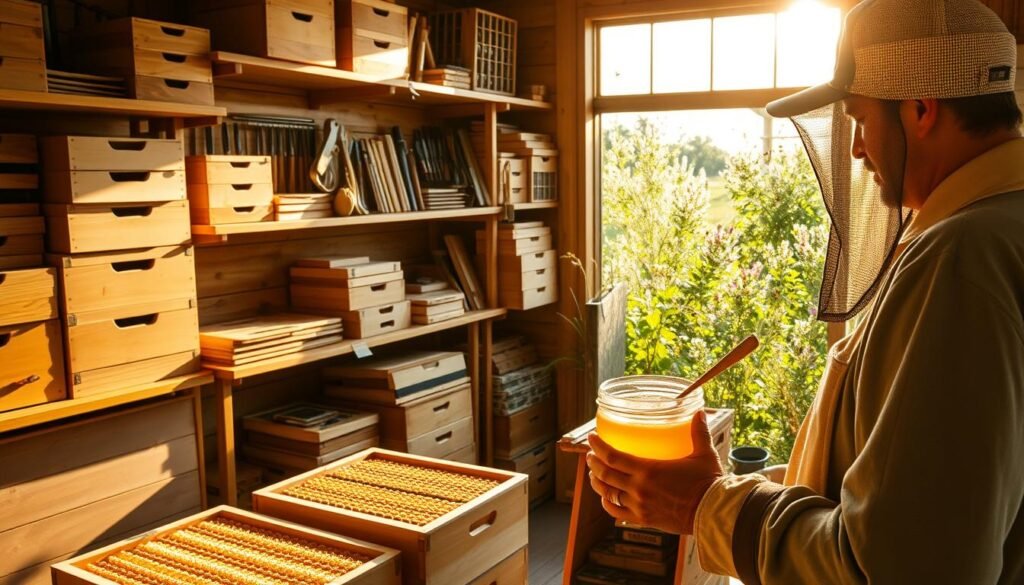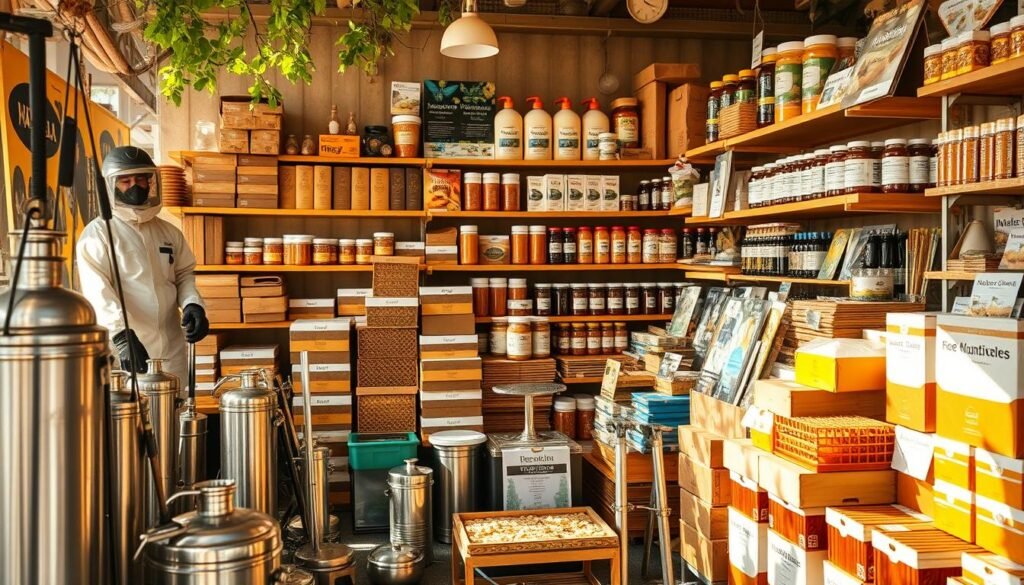Queensland’s subtropical capital buzzes with insect activity critical to its ecosystems. Among these tiny workers, certain striped pollinators demand particular attention. Recent biosecurity alerts highlight unexpected arrivals at major ports, including 10mm-long striped insects with distinctive nesting habits.
These newcomers differ from familiar European varieties. Smaller in size and less fuzzy, they display bold black-and-yellow patterns. Authorities confirm these detections fall under strict biosecurity controls, requiring public vigilance. Proper identification now forms part of every gardener’s toolkit.
Local environments thrive through pollination services supporting backyard veggie patches and commercial crops alike. Fruit trees, flowering shrubs, and native flora all depend on these efficient workers. However, not every buzzing visitor plays a helpful role.
Seasoned apiarists collaborate with residents to manage populations effectively. Their expertise helps balance conservation needs with agricultural demands. Community reporting channels enable swift responses to unusual sightings, protecting established colonies from invasive threats.
Key Takeaways
- Port interceptions of non-native species require immediate reporting
- Subtropical conditions favour diverse pollinator activity
- Size and stripe patterns help distinguish species
- Urban gardens rely on effective pollination networks
- Beekeeping groups provide essential management support
Honeybees Brisbane: Local Insights and Species Overview
Amidst urban growth, wild colonies of European bees shape the region’s ecological and economic landscapes. These insects support agricultural productivity while influencing native ecosystems. Their adaptability to subtropical conditions makes them key players in local pollination networks.
Local Importance for Pollination and Honey Production
European honey bees dominate Queensland’s honey industry, managing over 80% of crop pollination services. Key roles include:
- Sustaining fruit orchards and vegetable farms
- Producing 450+ tonnes of honey annually
- Supporting native plant reproduction
A 2014 study revealed hybridisation risks when Asian bee genetics entered commercial stocks. This affects honey quality and colony resilience, requiring careful monitoring.
Insights into Native Habitats and Regional Behaviour
Feral colonies thrive in gum tree hollows and urban cavities, foraging 10 months yearly due to warm climates. Flowering patterns of eucalypts and bottlebrush dictate honey production cycles. While beneficial for gardens, these populations sometimes displace native pollinators like stingless bees.
Beekeepers strategically place hives near flowering corridors. This practice balances commercial needs with environmental stewardship, ensuring diverse floral resources remain available for all species.
Identifying and Differentiating Bee Species
Accurate identification of bee species forms the frontline defence against ecological disruptions. Gardeners and biosecurity teams rely on visual markers to separate beneficial pollinators from invasive threats. Three key identifiers – size, colour patterns, and nesting habits – help distinguish species with overlapping territories.
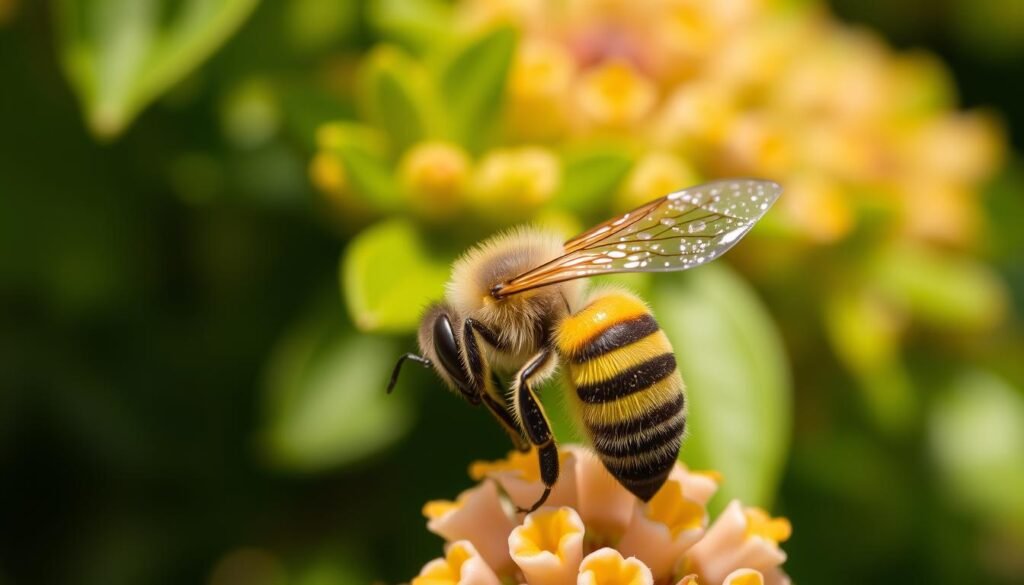
Asian Honey Bee: Characteristics and Potential Pests
The Asian honey bee measures 10mm long, sporting bold black-brown and yellow stripes. Unlike the fuzzy European honey bee, its sleek body has minimal hair. These insects aggressively guard exposed single-comb nests, often in tree branches or building eaves.
Key concerns include:
- Competition with native species for floral resources
- Potential to host harmful mites affecting commercial hives
- Increased swarming frequency compared to European varieties
Red Dwarf Honey Bee: Appearance, Behaviour and Impacts
Workers of this species display a striking reddish-brown upper abdomen with sharp black-white bands. At 7-10mm long, their 6-7mm forewings are notably shorter than European bees’ 8-10mm wings. White facial hairs contrast against dark thoraxes, creating distinct markers.
Behavioural traits complicate management:
- Preference for nesting in protected urban cavities
- Reduced honey production compared to commercial species
- Potential to hybridise with local populations
Biosecurity experts advise: “Measure wings and check abdominal bands before reporting sightings. When uncertain, contact local apiarists for verification.”
Managing Bee Populations and Pest Control
Effective insect management relies on teamwork between residents and authorities. Rapid response protocols help protect Queensland’s ecosystems from invasive species. Biosecurity measures prioritise prevention over cure, requiring community awareness and action.
Early Detection and Reporting of Invasive Bee Species
Spotting unusual bee activity triggers legal responsibilities. The Queensland Government mandates reporting suspected Asian honey bees within 24 hours outside Cairns. Use these channels:
- Online forms via biosecurity portals
- Exotic Plant Pest Hotline: 1800 084 881
Never handle nests or swarms. Untrained removal risks spreading pests and violating the Biosecurity Act 2014. Licensed experts use specific gear to minimise public danger.
Pest Control Measures and Biosecurity Guidelines
Certified operators follow strict protocols when eliminating invasive populations. Their training covers:
- Safe nest destruction techniques
- Protective equipment requirements
- First aid for rare stinging incidents
Surveillance teams monitor transport hubs and floral corridors. This strategy prevents establishment rather than managing existing colonies. “Report first, question later” remains the golden rule.
| Action | Residents | Professionals |
|---|---|---|
| Identification | Photo documentation | Wing measurement |
| Reporting | Phone/web alerts | Direct agency contact |
| Control | No intervention | Targeted eradication |
Public cooperation strengthens Queensland’s defences. Simple steps like securing compost bins or sealing wall gaps reduce nesting opportunities. Together, these efforts maintain healthy pollination networks across urban and rural areas.
Beekeeping Techniques, Tips and Local Directories
Modern apiculture thrives through strategic partnerships between hive managers and agricultural networks. Successful operations balance biological knowledge with practical industry expertise, particularly when combating genetic contamination risks.
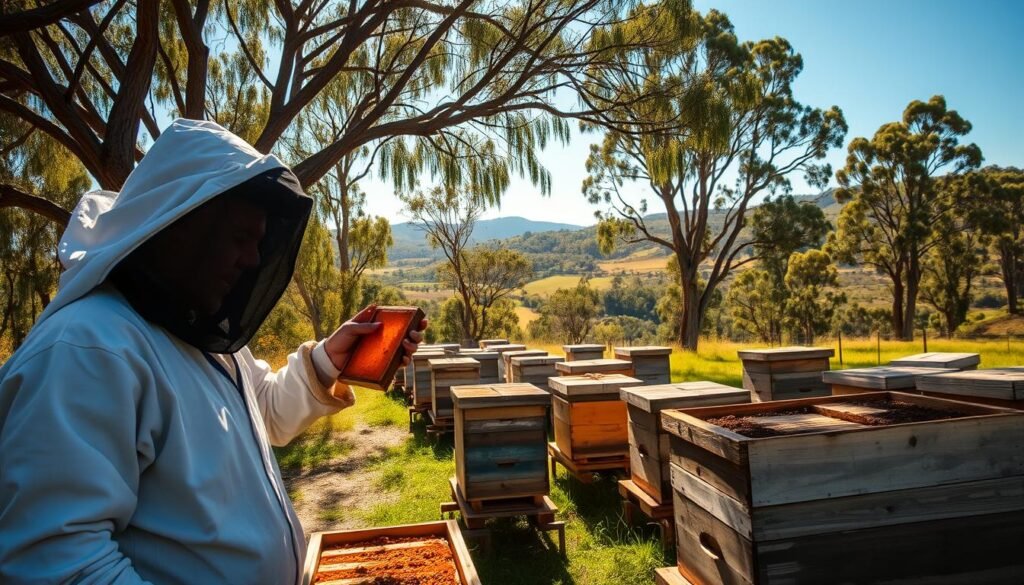
Sustainable Practices for Local Beekeepers
Maintaining pure genetic lines remains critical for colony health. Experts like Maurie Damon emphasise: “Queens sourced from uncontaminated regions yield 40% more workers than hybridised stock.” Key strategies include:
- Procuring queens from certified suppliers outside Asian bee zones
- Monthly productivity checks using standardised brood pattern tests
- Steam-sanitising hive tools between apiary visits
Michael Hornitzky’s research shows control zones reduce cross-mating by 72%. Regional beekeeping associations provide mapping tools to identify high-risk areas.
Leveraging Resource Hubs and Community Directories
Queensland’s apiculture networks offer vital support systems. Centralised platforms feature:
- Real-time pest alert systems
- Approved equipment suppliers
- Queen breeding schedules
Local directories connect beekeepers with extraction services and honey buyers. Training workshops cover swarm management and floral calendar planning – essential skills for maintaining productive hives.
Industry veterans advise: “Bookmark your regional biosecurity portal. Updated guidelines prevent costly compliance breaches.”
Conclusion
Safeguarding Australia’s agricultural future demands vigilant bee population control. Crossbreeding between European honey bees and invasive Asian honey bees threatens pollination services and honey production stability. The Varroa mite carried by Asian varieties could decimate local insect populations, mirroring international losses of 80-90%.
Distinct nesting habits complicate management efforts. While European colonies prefer enclosed hives, Asian counterparts build exposed comb structures in tree hollows or urban crevices. These open nests increase contact risks with wild pollinators and commercial worker bees.
Successful protection relies on three pillars: government surveillance, professional beekeeping networks, and resident awareness. Locals should monitor flowers and tree sites for unusual activity, reporting suspicious nests through official channels. Biosecurity teams then verify species using wing measurements and abdominal markings.
Queensland’s honey industry and food security depend on preventing Asian bee establishment. Strategic investments in detection technology and community education preserve both ecosystems and livelihoods. Every reported sighting strengthens regional defences against this buzzing biosecurity threat.

